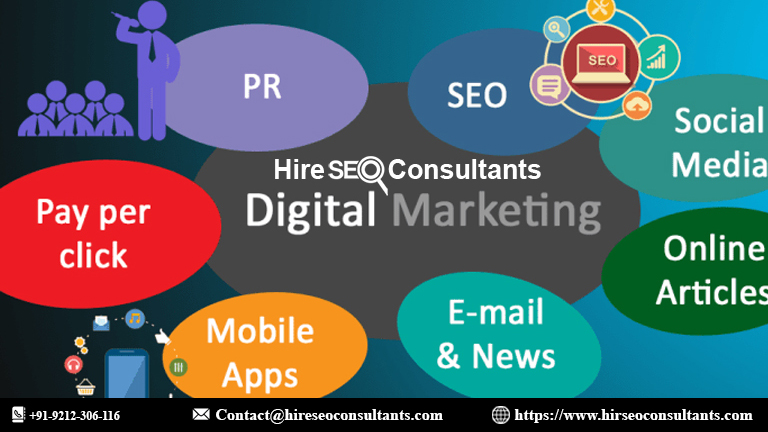How Can I Use Metrics to Identify and Remove Inactive or Unengaged Email Subscribers?
Discover how to effectively use email metrics to identify and remove inactive or unengaged subscribers. Learn practical strategies for improving your email marketing performance and maintaining a high-quality subscriber list.

Email marketing remains one of the most effective channels for reaching and engaging with your audience. However, to maintain its efficacy, it’s crucial to keep your email list clean and targeted. One of the most common issues marketers face is dealing with inactive or unengaged subscribers. These are contacts who no longer interact with your emails, which can negatively impact your deliverability, open rates, and overall campaign performance. In this blog post, we’ll explore how to use metrics to identify and remove these inactive or unengaged email subscribers, ensuring your email marketing strategy remains effective and efficient.
Understanding Email Engagement Metrics
Before diving into how to identify and remove inactive subscribers, it’s important to understand the key metrics that reflect subscriber engagement. These metrics will help you gauge the health of your email list and pinpoint those who are no longer active.
Open Rate
- Definition: The percentage of recipients who open your email.
- Significance: A declining open rate can indicate that subscribers are losing interest or that your emails are not reaching their inbox effectively.
Click-Through Rate (CTR)
- Definition: The percentage of recipients who click on a link within your email.
- Significance: Low CTR suggests that even if subscribers open your email, they are not engaging with its content.
Bounce Rate
- Definition: The percentage of emails that could not be delivered to the recipient's inbox.
- Significance: High bounce rates often indicate issues with the quality of your email list or deliverability problems.
Unsubscribe Rate
- Definition: The percentage of recipients who opt out of your email list after receiving a campaign.
- Significance: An increasing unsubscribe rate can be a sign of irrelevant or poorly targeted content.
Engagement Rate
- Definition: A combined metric of open rate, CTR, and other interactions.
- Significance: A comprehensive measure of how well your audience is engaging with your content.
Identifying Inactive Subscribers
Once you understand these metrics, the next step is to identify inactive subscribers. Here’s how you can use the data to pinpoint who should be removed from your list:
Segment by Engagement Levels
- Action: Create segments based on engagement metrics such as open rates and CTR. For example, you can create segments for subscribers who haven’t opened your emails in the last 6 months.
- Tool: Use your email marketing platform’s segmentation tools to automate this process.
Analyze Historical Data
- Action: Review historical data to identify patterns of inactivity. Look for trends such as declining engagement over time.
- Tool: Utilize analytics tools within your email marketing platform to generate reports on subscriber activity.
Apply Engagement Thresholds
- Action: Set thresholds for what constitutes inactivity. For instance, consider subscribers who haven’t engaged with your emails in the last 90 days as inactive.
- Tool: Most email marketing platforms allow you to set custom filters and thresholds for segmenting your list.
Strategies for Removing Inactive Subscribers
Removing inactive subscribers is crucial for maintaining a healthy email list. Here are strategies to do this effectively:
Re-Engagement Campaigns
- Action: Before removing subscribers, try to re-engage them with a targeted campaign. Offer incentives or ask for feedback to understand why they’re no longer engaging.
- Example: Send a “We Miss You” email with a special offer or survey.
Automated Cleanup
- Action: Implement automated processes to handle inactive subscribers. Set up workflows that automatically move inactive subscribers to a separate list or remove them after a set period of inactivity.
- Tool: Use automation features in your email marketing platform to streamline this process.
Regular List Maintenance
- Action: Schedule regular cleanups of your email list to ensure it remains up-to-date. This should be part of your overall email marketing strategy.
- Frequency: Perform list cleanups quarterly or bi-annually, depending on your email volume and engagement patterns.
Monitor and Adjust
- Action: Continuously monitor the effectiveness of your list maintenance strategies. Adjust thresholds and re-engagement tactics based on performance data.
- Tool: Use analytics dashboards to track the impact of your list cleaning efforts.
Best Practices for Maintaining a Healthy Email List
To prevent the build-up of inactive subscribers in the future, follow these best practices:
Segment Your Audience
- Action: Use segmentation to send more relevant content to different groups within your audience. This increases the likelihood of engagement and reduces the chance of inactivity.
- Example: Create segments based on past purchase behavior, interests, or geographic location.
Personalize Content
- Action: Personalize your emails to resonate with your subscribers. Use their names, past interactions, and preferences to create tailored content.
- Tool: Utilize personalization features in your email marketing platform.
Optimize Send Times
- Action: Analyze when your subscribers are most likely to open your emails and schedule your campaigns accordingly.
- Tool: Use send-time optimization features to automatically adjust send times based on subscriber behavior.
Engage Regularly
- Action: Maintain regular communication with your subscribers to keep them engaged. Avoid long periods of inactivity in your email schedule.
- Frequency: Develop a content calendar to ensure consistent and relevant communication.
Identifying and removing inactive or unengaged email subscribers is essential for maintaining a high-performing email marketing strategy. By using key metrics such as open rates, click-through rates, and engagement rates, you can effectively pinpoint and manage these subscribers. Implementing strategies such as re-engagement campaigns, automated cleanup, and regular list maintenance will help ensure your email list remains healthy and your campaigns continue to deliver results.
Remember, a clean and engaged email list not only improves your deliverability and open rates but also enhances your overall marketing ROI. Keep monitoring your metrics, adjust your strategies as needed, and continue to provide value to your subscribers to maintain an effective email marketing program.
Advanced Techniques for Managing Inactive Subscribers
To take your email list management to the next level, consider these advanced techniques and tools:
Behavioral Triggers
- Action: Implement behavioral triggers that respond to specific actions or inactions of your subscribers. For example, set up automated emails that are triggered when a subscriber hasn’t interacted with your emails for a certain period.
- Tool: Use advanced automation platforms that support behavioral triggers and workflows to keep your list engaged.
Engagement Scoring
- Action: Develop an engagement scoring system to rate subscribers based on their activity. Assign scores based on actions such as opens, clicks, and conversions. Subscribers with low scores can be flagged for re-engagement or removal.
- Tool: Use CRM or email marketing software that offers engagement scoring features to track and manage subscriber interactions effectively.
Win-Back Campaigns
- Action: Create targeted win-back campaigns designed specifically to re-engage dormant subscribers. These campaigns should offer compelling reasons for subscribers to return, such as exclusive discounts or valuable content.
- Example: A “We Miss You” series that includes a special offer or a survey to gather feedback on why they haven’t been engaging.
List Hygiene Tools
- Action: Utilize third-party list hygiene tools to clean your email list and verify email addresses. These tools can help you identify invalid or outdated email addresses and improve deliverability.
- Tool: Services like NeverBounce or ZeroBounce can help maintain the quality of your email list by removing invalid addresses.
Feedback Collection
- Action: Incorporate feedback loops to understand why subscribers become inactive. Include surveys or feedback forms in your re-engagement campaigns to gather insights directly from subscribers.
- Example: A short survey asking why they haven’t been engaging and what changes might prompt them to re-engage.
Segmentation Refinement
- Action: Continuously refine your segmentation strategy based on engagement metrics and feedback. Create more nuanced segments to better target your content and improve engagement.
- Tool: Use advanced segmentation features in your email marketing platform to create segments based on detailed criteria.
Legal and Ethical Considerations
When managing inactive subscribers, it’s important to adhere to legal and ethical standards:
Compliance with GDPR and CCPA
- Action: Ensure your email list management practices comply with data protection regulations such as the General Data Protection Regulation (GDPR) and the California Consumer Privacy Act (CCPA). This includes obtaining explicit consent for email communications and providing options for data deletion.
- Tool: Implement consent management and data protection tools to help comply with regulatory requirements.
Respect Subscriber Preferences
- Action: Always respect subscribers’ preferences and choices. If a subscriber opts out or requests removal, ensure their request is processed promptly and their data is removed from your list.
- Tool: Use unsubscribe and preference management features in your email marketing platform to handle opt-outs and data removal efficiently.
Transparency and Communication
- Action: Be transparent about how you handle subscriber data and communicate your practices clearly. Include information about data handling in your privacy policy and during sign-up processes.
- Tool: Update your privacy policy and provide clear information about data usage and subscriber rights.
Case Studies and Success Stories
Understanding how other businesses have successfully managed inactive subscribers can provide valuable insights:
Case Study: E-Commerce Retailer
- Challenge: An e-commerce retailer faced declining engagement rates and a growing number of inactive subscribers.
- Solution: They implemented a series of win-back campaigns, including personalized offers and feedback surveys. They also used engagement scoring to segment their list and focus on high-potential leads.
- Result: The retailer saw a 25% increase in re-engagement rates and a significant improvement in overall email performance.
Case Study: SaaS Company
- Challenge: A SaaS company struggled with a high bounce rate and inactive subscribers impacting their deliverability.
- Solution: They employed list hygiene tools to clean their list, set up automated re-engagement workflows, and refined their segmentation strategy based on user behavior.
- Result: The company achieved a 30% reduction in bounce rates and a 20% increase in open rates.
Effectively managing inactive or unengaged email subscribers is crucial for optimizing your email marketing strategy and maintaining high deliverability and engagement rates. By leveraging key metrics, employing advanced techniques, and adhering to legal standards, you can ensure your email list remains robust and effective.
Regularly monitor your email performance, refine your strategies based on data insights, and remain transparent and respectful in your subscriber interactions. With a clean and engaged email list, you’ll be well-positioned to drive meaningful results and achieve your marketing goals.
Remember, email marketing is not a one-time effort but an ongoing process. Stay proactive in managing your email list and continuously seek ways to improve your strategies for long-term success.
Additional Considerations
As you work to manage your email list effectively, consider these additional factors to further refine your strategy:
Integrating with Other Channels
- Action: Coordinate your email marketing efforts with other channels such as social media, SMS, and direct mail. This holistic approach can help re-engage inactive subscribers by reaching them through multiple touchpoints.
- Example: Use social media retargeting ads to reach subscribers who haven’t engaged with your emails but interact with your brand on social platforms.
Personalization Beyond the Basics
- Action: Go beyond basic personalization by using advanced data insights to tailor your content. For example, use behavioral data to send highly relevant offers or content based on a subscriber’s past interactions.
- Tool: Implement predictive analytics tools to anticipate subscriber needs and preferences, and adjust your messaging accordingly.
Content Strategy Optimization
- Action: Regularly review and optimize your content strategy to ensure it remains relevant and valuable to your subscribers. Analyze which types of content generate the most engagement and tailor your emails accordingly.
- Tool: Use content performance analytics to identify trends and preferences among your subscribers.
Testing and Experimentation
- Action: Conduct A/B testing on various elements of your emails, such as subject lines, content formats, and calls-to-action, to determine what resonates best with your audience.
- Tool: Use A/B testing features within your email marketing platform to systematically test and optimize different aspects of your emails.
Tips for Enhancing Email Engagement
Create Compelling Subject Lines
- Action: Craft subject lines that capture attention and encourage opens. Use personalization, urgency, or curiosity to make your emails stand out in the inbox.
- Example: “Last Chance: Exclusive Offer Just for You!” or “See What You’ve Been Missing – Special Deal Inside!”
Optimize for Mobile
- Action: Ensure your emails are mobile-friendly, as a significant portion of email opens occurs on mobile devices. Use responsive design to create emails that look great on all screen sizes.
- Tool: Use mobile preview features in your email marketing platform to test how your emails appear on different devices.
Leverage User-Generated Content
- Action: Incorporate user-generated content such as reviews, testimonials, or photos in your emails to build trust and engagement.
- Example: Share customer success stories or showcase user reviews to make your content more relatable and engaging.
Offer Value with Every Email
- Action: Ensure every email you send provides value to the recipient, whether it’s through exclusive offers, valuable content, or useful tips.
- Tip: Avoid sending emails that are purely promotional; instead, aim to educate, entertain, or solve problems for your subscribers.
Future Trends in Email Marketing
As email marketing continues to evolve, staying ahead of emerging trends can help you maintain an effective strategy:
Artificial Intelligence (AI) and Machine Learning
- Trend: AI and machine learning are increasingly being used to personalize email content and automate responses. These technologies can help predict subscriber behavior and tailor content more precisely.
- Example: Use AI-driven tools to analyze subscriber behavior and recommend products or content based on their interests.
Interactive Email Elements
- Trend: Interactive elements such as polls, surveys, and quizzes are becoming more popular in email marketing. These features can increase engagement and provide valuable feedback.
- Example: Include a survey in your email to gather opinions or preferences from your subscribers.
Privacy and Data Protection
- Trend: With increasing concerns about data privacy, email marketers need to be more transparent and compliant with privacy regulations. Building trust through ethical data practices will be crucial.
- Tip: Regularly review and update your privacy policies and ensure that your email practices comply with current regulations.
Dynamic Content
- Trend: Dynamic content allows you to customize email content in real-time based on subscriber data and behavior. This approach enhances personalization and relevance.
- Example: Use dynamic content to display product recommendations based on a subscriber’s past purchases or browsing behavior.
Managing inactive or unengaged email subscribers requires a strategic approach that leverages metrics, advanced techniques, and best practices. By focusing on engagement metrics, implementing targeted re-engagement campaigns, and employing automation, you can maintain a healthy and effective email list.
Incorporating additional considerations such as integrating with other channels, optimizing content, and staying informed about future trends will further enhance your email marketing efforts. As the digital landscape evolves, staying proactive and adaptable will ensure your email marketing strategy remains impactful and successful.
Regularly review your email performance, test new strategies, and keep your subscribers’ preferences and behaviors at the forefront of your efforts. With a clean and engaged email list, you’ll be well-positioned to achieve your marketing objectives and build lasting relationships with your audience.
Frequently Asked Questions (FAQ)
What is an inactive email subscriber?
An inactive email subscriber is someone who has not engaged with your email campaigns over a specified period. Engagement can include actions such as opening emails, clicking on links, or responding to calls-to-action. Inactivity often indicates that the subscriber is no longer interested in your content or may have abandoned their email address.
How do I determine if a subscriber is inactive?
To determine if a subscriber is inactive, monitor key email engagement metrics:
- Open Rate: Low or declining open rates may signal inactivity.
- Click-Through Rate (CTR): A decrease in CTR can indicate that subscribers are not engaging with your content.
- Engagement History: Analyze how long it has been since a subscriber last interacted with your emails.
You can set thresholds based on these metrics to classify subscribers as inactive. For example, you might consider anyone who hasn’t opened or clicked on an email in the last 90 days as inactive.
What should I do before removing inactive subscribers?
Before removing inactive subscribers, consider running a re-engagement campaign. This can include sending targeted emails with special offers, surveys, or requests for feedback to try and re-engage them. If there’s no improvement after these efforts, you can then proceed with removal.
How often should I clean my email list?
List cleaning should be done regularly to maintain email list health. A good practice is to perform a cleanup quarterly or bi-annually, depending on the volume of your email campaigns and engagement patterns.
What are some effective strategies for re-engaging inactive subscribers?
Effective strategies for re-engaging inactive subscribers include:
- Win-Back Campaigns: Send a series of emails with compelling offers or content to rekindle interest.
- Feedback Requests: Ask subscribers for feedback on why they haven’t engaged and what would make them interested again.
- Personalized Offers: Provide tailored offers or incentives based on past interactions.
How can I automate the process of managing inactive subscribers?
Many email marketing platforms offer automation features that can help manage inactive subscribers. You can set up automated workflows to:
- Identify Inactive Subscribers: Automatically segment subscribers based on engagement metrics.
- Send Re-Engagement Emails: Trigger re-engagement campaigns based on inactivity.
- Remove Inactive Subscribers: Automatically remove or archive subscribers who do not respond to re-engagement efforts after a certain period.
How can I ensure my email list remains compliant with privacy regulations?
To ensure compliance with privacy regulations like GDPR and CCPA:
- Obtain Explicit Consent: Ensure that you have clear consent from subscribers to send them emails.
- Provide Opt-Out Options: Include easy-to-find unsubscribe links in all your emails.
- Honor Data Requests: Allow subscribers to request data deletion or access to their information.
What tools can help with list hygiene and validation?
Several tools can assist with maintaining list hygiene and validating email addresses:
- NeverBounce
- ZeroBounce
- EmailListVerify These tools help remove invalid email addresses and improve deliverability.
What impact does removing inactive subscribers have on my email metrics?
Removing inactive subscribers can positively impact your email metrics by:
- Improving Open Rates: With a more engaged list, your open rates are likely to increase.
- Enhancing Deliverability: Reducing bounce rates and spam complaints by removing invalid or unengaged addresses.
- Increasing Engagement: Focusing on subscribers who are interested in your content can lead to higher click-through rates and conversions.
How can I use engagement metrics to create better email content?
Analyze engagement metrics to understand what resonates with your audience:
- Identify Popular Content: Determine which emails have the highest open and click-through rates to inform future content.
- Segment Based on Interests: Use engagement data to segment your audience and send more relevant, targeted content.
- Test and Iterate: Continuously test different types of content and subject lines to optimize engagement based on subscriber preferences.
Get in Touch
Website – https://www.webinfomatrix.com
Mobile - +91 9212306116
Whatsapp – https://call.whatsapp.com/voice/9rqVJyqSNMhpdFkKPZGYKj
Skype – shalabh.mishra
Telegram – shalabhmishra
Email - info@webinfomatrix.com
Tags
What's Your Reaction?




















